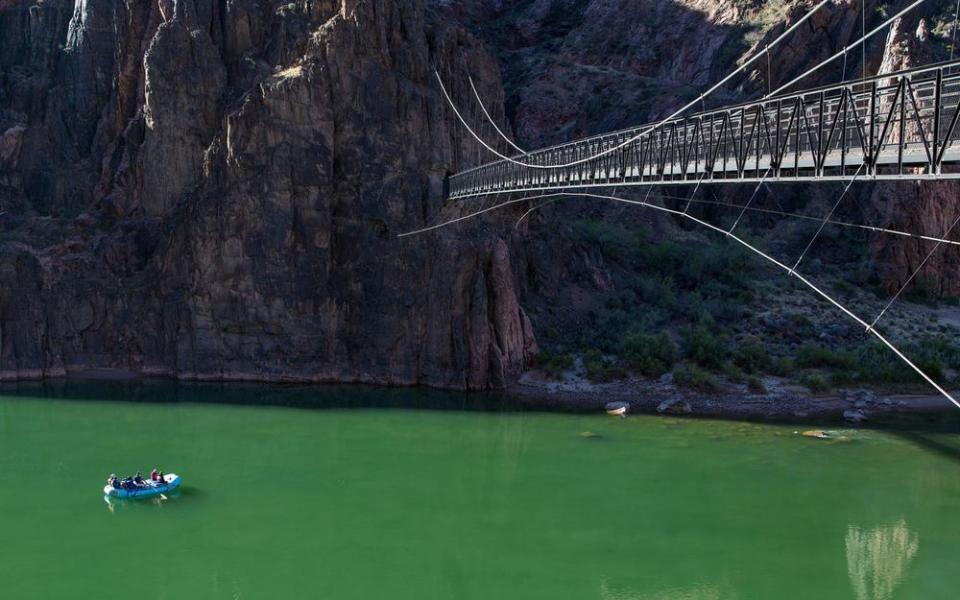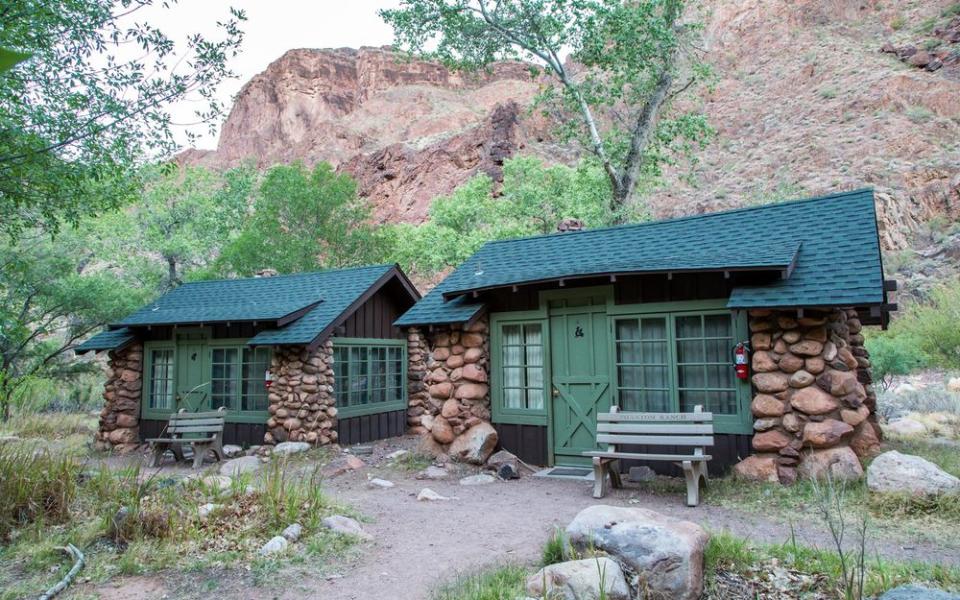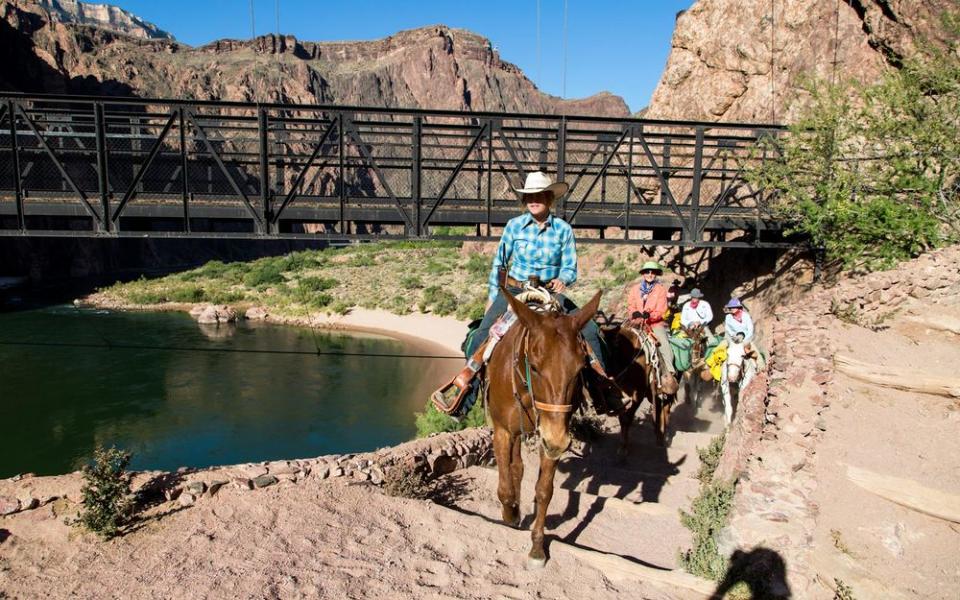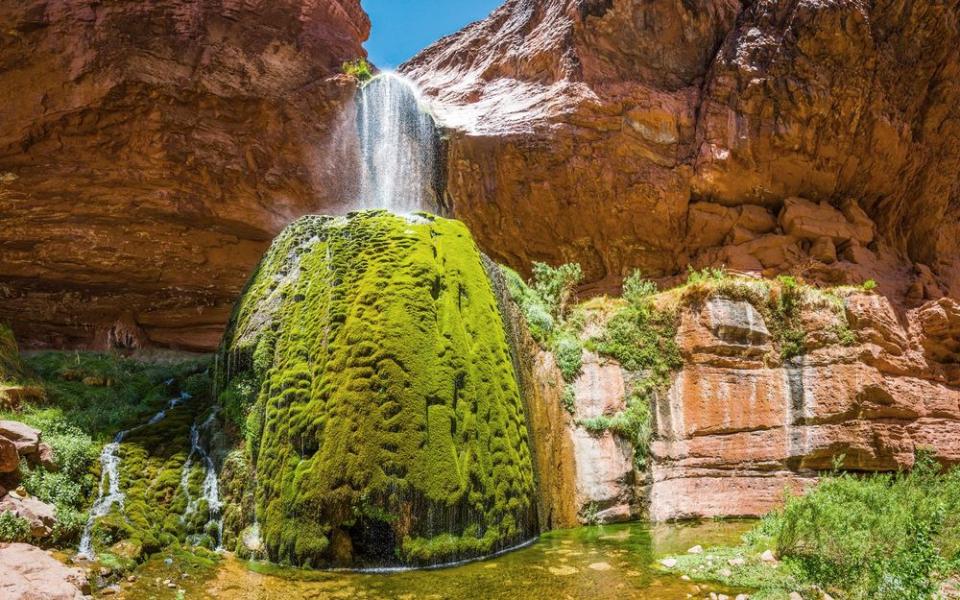Grand Canyon Hiking: The Best Tours, Trails, and Tips
Hiking in Grand Canyon National Park isn’t for the faint of heart (or weak of quads). The canyon is a vast, desert landscape, full of cliffs, steep drops, and loose, rocky earth. Weather is a mixed bag that can range from intense heat to severe thunderstorms, depending on the season and which part of the canyon you choose to explore.
“There is no easy trail in the Grand Canyon,” says Andrea Ross, a former Grand Canyon park ranger and hiking guide. From the East Rim to the West Rim, the Grand Canyon reaches 277 miles long. It's about 18 miles wide from the North Rim to the South Rim, and more than 6,000 feet deep from the top to the canyon floor. But for those who are physically prepared for the steep descents and seemingly steeper ascents, hiking in this, the grandest of canyons, pays off with jaw-dropping views and epic wilderness experiences.

From day hikes to multi-night backcountry excursions that take you past slot canyons, waterfalls, and more, it’s no wonder the Grand Canyon is a bucket list destination for any adventurous hiker.
Grand Canyon Hiking Tours
For more than 100 years, people have been exploring the vast and timeless beauty of this designated national park on foot. While individuals can acquire hiking permits via a lottery system up to a year in advance for some trails, reputable outfitters offer a variety of tours that can remove the difficulty of logistical planning, while adding an extra layer of knowledge and safety. “When you’re in the backcountry, people like to know they’re with someone who knows the routes, has first aid training, and has a way of communicating to assist you if needed. Guides provide all that,” says Andy Kronen, the REI Adventures North America program manager, who designs REI’s Grand Canyon trips in conjunction with local guides. “There is also the interpretive aspect, wanting to be down there with someone who can fill you in on anything you are looking at, including natural history, geology, flora and fauna.”


One of REI Adventures’ most popular Grand Canyon hikes is a seven-day backing trip that includes two nights at the legendary Phantom Ranch. Guiding, meals, permits, and difficult-to-secure reservations for Phantom Ranch are included in the cost of the trip.
The Grand Canyon Conservancy Field Institute has been working with the National Park Service (NPS) for more than two and a half decades, “to provide educational opportunities that complement the park's interpretive efforts.” They offer day hikes and multi-day trips, including mule-assisted trips.

Wildland Trekking offers dozens of hiking and backpacking trips in the Grand Canyon. Its base camp trips allow hikers to establish a campsite at a campground in the park and set off from there on day hikes along the rim and into the canyon, returning each night.
Grand Canyon Hiking Trails
Beginner: Cape Final – This 4-mile hike (roundtrip) along the North Rim is isolated, quiet, and relatively flat, making it approachable for all levels. The trail takes hikers off more populated routes and ultimately provides sweeping views of the eastern Grand Canyon, including Vishnu Temple and Jupiter Temple.
%image1
Moderate: South Kaibab Trail – Beginning near Yaki Point on the South Rim, hikers descend 4,500 feet for nearly seven miles along a ridge line to Kaibab Suspension Bridge, which spans the Colorado River. Considered a moderate hike, the 1.5-mile hike to Cedar Ridge is a perfect day hike, or you can continue to the river and spend the night. This trail connects easily to Bright Angel for a longer, but more gradual climb out the next day.

Moderate: Ribbon Falls – Once on the canyon floor, Ribbon is an 11-mile day hike (roundtrip) from Phantom Ranch or a campsite. A great way to find comfort in the heat, the hike to Ribbon Falls takes trekkers through lush vegetation to a secluded, cool, and wet location.
Expert: Grandview Trail – One of the Canyon’s lesser known trails, Grandview is not as maintained as others, and it is considered an expert hike. Originally built as a mining route, this trail has extreme drop-offs, and upper portions can be snow-covered and icy in non-summer months.
The Best Grand Canyon Day Hike
At nearly 10 miles one-way, Bright Angel is the most popular hiking trail in the Grand Canyon. Not only is it easy to access from the South Rim— its trailhead is located just west of Bright Angel Lodge in Grand Canyon Village— it also offers great views and can be shortened at any point to complete in one day. This dirt trail has several water stations and covered rest stops, and it is considered the safest trail in the canyon. The first four miles of trail are steep as hikers navigate a series of switchbacks until reaching Indian Garden, where the trail flattens and finally ends at the Bright Angel Campground.
Grand Canyon Hiking Tips and What to Know
Park entry fees: According to the National Park Service website, a Grand Canyon National Park Vehicle Permit costs $35, admits one vehicle and all of its passengers, and is good for seven days. An annual pass is $70. The cost is $30 for a motorcycle. If you arrive at the Grand Canyon by other means of transportation, including bike, park shuttle bus, on foot, on a private rafting trip, or via the Grand Canyon Railway, you are required to pay $20 per person for an individual permit (children under 15 years old are admitted for free).
Weather
Northern Arizona experiences all four seasons, and hikers should be prepared for extreme heat or cold, depending on the seasonal variations. In summer, temperatures can soar above 100 degrees, which means many hikers will begin their days before dawn and end hiking by noon. Ideal hiking seasons are spring and fall.
Safety Tips
Desert hiking is all about hydration and nourishment. With dry air, higher altitudes, extreme temperatures, and very few water sources, hikers are encouraged to bring ample water and plenty of food with salt to help retain water. The sun is intense during summer months, so proper head wear is also required. For some steep sections, hikers should have good balance and be prepared for extreme heights and exposed trails.

